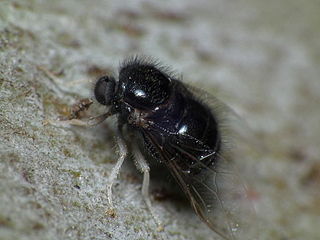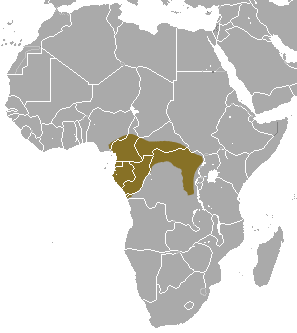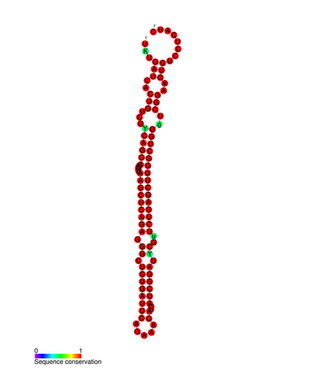
Catsharks are ground sharks of the family Scyliorhinidae. They are the largest family of sharks with around 160 species placed in 17 genera. Although they are generally known as catsharks, some species can also be called dogfish due to previous naming. However, a dogfish may generally be distinguished from a catshark as catsharks lay eggs while dogfish have live young. Like most bottom feeders, catsharks feed on benthic invertebrates and smaller fish. They are not harmful to humans. The family is paraphyletic, containing several distinct lineages that do not form a monophyletic group.

Nahanni National Park Reserve in the Dehcho Region of the Northwest Territories, Canada, approximately 500 km (311 mi) west of Yellowknife, protects a portion of the Mackenzie Mountains Natural Region. The centrepiece of the park is the South Nahanni River. Four noteworthy canyons reaching 1,000 m (3,300 ft) in depth, called First, Second, Third and Fourth Canyon, line its whitewater river. The name Nahanni comes from the indigenous Dene language name for the area; Nahʔa Dehé, which means "river of the land of the Nahʔa people". The park was among the world's first four natural heritage locations to be inscribed as World Heritage Sites by UNESCO in 1978 because of its picturesque wild rivers, canyons, and waterfalls.

The Clethraceae are a small family of flowering plants in the order Ericales, composed of two genera, Clethra and Purdiaea, with approximately 75 species. They are native to warm temperate to tropical regions of Asia and the Americas, with one species also on Madeira.

Podocnemis is a genus of aquatic turtles, commonly known as South American river turtles, in the family Podocnemididae. The genus consists of six extant species occurring in tropical South America. Four additional species are known only from fossils.

The Clitellata are a class of annelid worms, characterized by having a clitellum – the 'collar' that forms a reproductive cocoon during part of their life cycles. The clitellates comprise around 8,000 species. Unlike the class of Polychaeta, they do not have parapodia and their heads are less developed.

The Acroceridae are a small family of odd-looking flies. They have a hump-backed appearance with a strikingly small head, generally with a long proboscis for accessing nectar. They are rare and not widely known. The most frequently applied common names are small-headed flies or hunch-back flies. Many are bee or wasp mimics. Because they are parasitoids of spiders, they also are sometimes known as spider flies.
Netalzul Meadows Provincial Park is a provincial park in British Columbia, Canada. It is located in the Harold-Price watershed, about 50 km north of Smithers. The park consists of an unusual wet meadow complex, as well as a spectacular waterfall and rare plant species.

The black-footed mongoose is a mongoose species native to Central Africa, where it inhabits deep deciduous forests from eastern Nigeria to the southern Democratic Republic of the Congo. It has been listed as Least Concern on the IUCN Red List since 2008. It is omnivorous and feeds on ants, termites, Orthoptera, small rodents, frogs, lizards and fruits. It is mostly solitary and nocturnal.

Locustellidae is a newly recognized family of small insectivorous songbirds ("warblers"), formerly placed in the Old World warbler "wastebin" family. It contains the grass warblers, grassbirds, and the Bradypterus "bush warblers". These birds occur mainly in Eurasia, Africa, and the Australian region. The family name is sometimes given as Megaluridae, but Locustellidae has priority.

The black-eared flying fox, species Pteropus melanotus, is a bat of the family Pteropodidae (megabats). Also known as Blyth's flying fox, it is found on the Andaman Islands and Nicobar Islands (India), and in Sumatra (Indonesia). A population on Christmas Island, which is critically endangered, has been placed as a subspecies of this population. The conservation and taxonomic status of that population was later re-established as a distinct species, the Christmas Island fruit-bat Pteropus natalis.

Stink badgers or false badgers are the species of the genus Mydaus of the skunk family of carnivorans, the Mephitidae. They resemble the better-known members of the family Mustelidae also termed 'badgers'. There are only two extant species – the Palawan stink badger or pantot, and the Sunda stink badger or teledu. They live west of the Wallace Line; the Sunda species on islands of the Greater Sunda Islands, being Sumatra, Java, and Borneo; in Borneo the badger is found in Indonesia, Malaysia and Brunei. The Palawan species lives in the Philippine island of Palawan as well as the islands surrounding it.

Osan University Station is a station on Seoul Subway Line 1. Osan University, despite the name of the station, is about a mile away from this station, and is closer to the next station on Line 1.
Funk Brothers Seed Co. v. Kalo Inoculant Co., 333 U.S. 127 (1948), is a United States Supreme Court decision in which the Court held that a facially trivial implementation of a natural principle or phenomenon of nature is not eligible for a patent.

The Anacampserotaceae are a family of plants proposed in the February 2010 issue of the journal Taxon. The family was described by Urs Eggli and Reto Nyffeler in their analysis of the polyphyly in the suborder Portulacineae. The new family and its circumscription was based on molecular and morphological data. The three recognized genera - Anacampseros, Grahamia, and Talinopsis - were formerly placed in the Portulacaceae and comprise a total of 36 known species. This family was accepted in the Angiosperm Phylogeny Group's 2009 publication of the APG III system.

mir-127 microRNA is a short non-coding RNA molecule with interesting overlapping gene structure. miR-127 functions to regulate the expression levels of genes involved in lung development, placental formation and apoptosis. Aberrant expression of miR-127 has been linked to different cancers.

In molecular biology, mir-433 is a short non-coding RNA molecule. MicroRNAs (miRNAs) function as posttranscriptional regulators of expression levels of other genes by several mechanisms. They play roles in development, metabolism and carcinogenesis.
Haswell Island is the largest of the Haswell Islands, lying off the coast of Antarctica, about 3 kilometres (1.5 nmi) north of Mabus Point in Queen Mary Land. It was discovered by the Western Base Party of the Australasian Antarctic Expedition, 1911–14, under Mawson, and named by him for Professor William A. Haswell, a zoologist at Sydney University and a member of the expedition's Advisory Committee.
Gilmoremys is an extinct genus of softshell turtle which lived during the late Cretaceous of North Dakota, Montana and Wyoming, United States.
Myotis diminutus is a species of mouse-eared bat found in Ecuador and Colombia. It was recently described as a new species in 2011.
Mattauschia is an extinct genus of trematopid temnospondyls from the Late Carboniferous of the Czech Republic.













